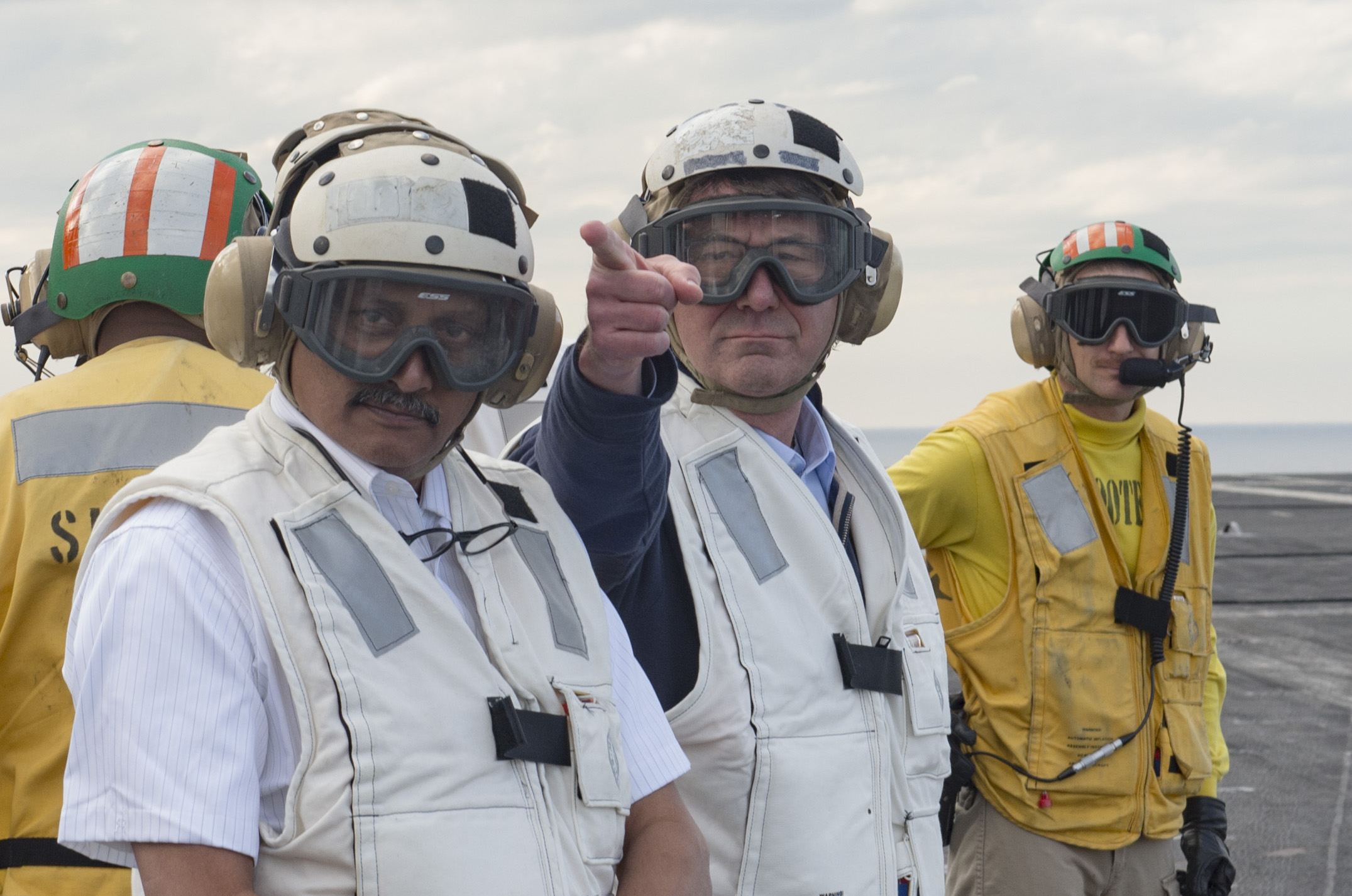
ONBOARD AIRCRAFT CARRIER USS DWIGHT D. EISENHOWER — In a blast of rotor wash from a Marine MV-22 Osprey, Secretary of Defense Ash Carter and Indian Minister of Defense Manohar Parrikar came aboard one of the largest and most technical expressions of American power projection — a Nimitz-class aircraft carrier.
Parrikar’s delegation of civilian officials and flag and general officers from all branches of the Indian military nibbled on treats from Ike’s galley before watching F/A-18s catapult from the flight deck and quizzing the ship’s crew on the day-to-day realities of carrier operations.
The trip — while a textbook execution of the Navy’s age-old distinguished visitor carrier visit program — took on extra significance as the U.S. and India continue to outline how the two countries could cooperate in constructing India’s second domestically built aircraft carrier and deepen bilateral operations.
Before departing the Pentagon on Thursday, Carter and Parrikar held a joint press conference to serve as an update on how defense cooperation between two countries is progressing since the early 2015 India and U.S. Defense Technology and Trade Initiative agreement.
The DTTI “fosters technology cooperation, works to build industry-to-industry ties, and it identifies opportunities for the co-development and co-production of defense systems,” Carter said in the Thursday presser.
The agreement is partially tied to the “Make in India” push for India to build its own defense material domestically.
“I have conveyed to Secretary Carter our desire to further collaborate in the higher-end tasks [and] technologies within the framework of DTTI,” Parrikar said at the Pentagon briefing.
“We also reviewed the cooperation between our armed forces, which have grown stronger. Today, India, I’m pleased to say, is conducting more military exercises with U.S. than any other country.”
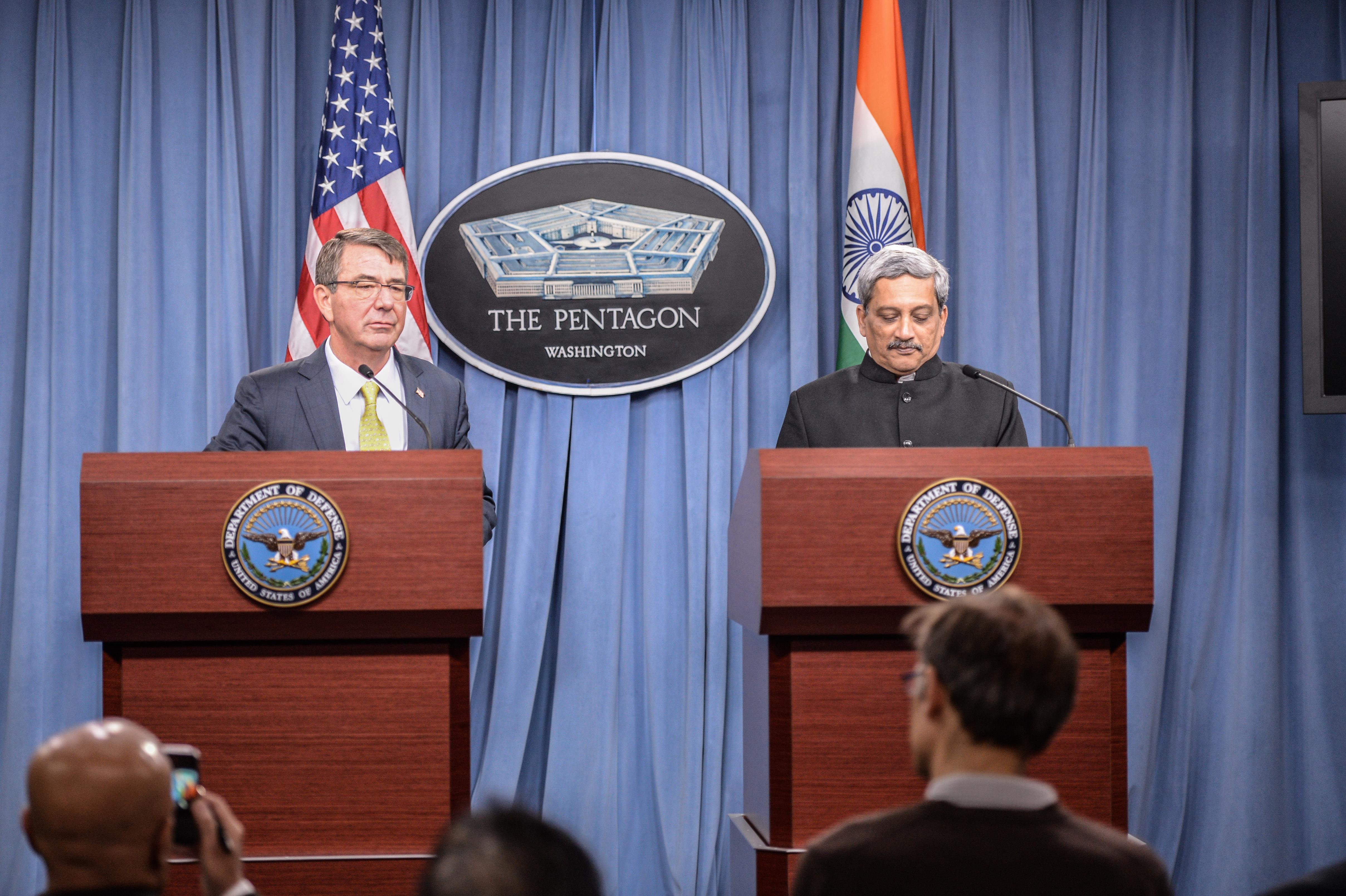
The DTTI agreement calls for greater cooperation in jointly developing aircraft carrier and jet engine technology while also looking for other avenues for cooperation.
While the carrier and jet engine programs are on the high-end of defense cooperation, the pair has identified four so-called pathfinder programs as early tests of the new cooperation, according to an outline of the programs obtained by USNI News.
Those include:
-Developing an Indian Next Generation Protective Ensemble (NGPE), new protective clothing to allow troops to better operate in chemically and biologically contaminated areas based on the U.S. Army’s Uniform Integrated Protection Ensemble Increment 2.
-Production of the small Cheel unmanned aerial vehicle based on the American AeroVironment’s Raven UAV in partnership India’s Dynamics Technologies Limited.
-Roll-on/Roll-off modules for India’s fleet of Lockheed Martin C-130J Super Hercules transports in cooperation with Lockheed Martin.
-And co-development work U.S. Marine Corps Mobile Electric Hybrid Power Sources — a combination of internal combustion engines, solar panels and battery storage arrays to be used as an expeditionary power source.
Several sources told USNI News the progress on the two industry projects — the Cheel UAV and the Roll-on/Roll-off module — has been slower than expected.
In addition to the material cooperation, Carter announced India would participate in the next year’s biennial of the Rim of the Pacific exercise off Hawaii and return to the U.S. Air Force’s high-end air combat exercise Red Flag — held at Nellis Air Force Base, Nev.
Cooperation in Context
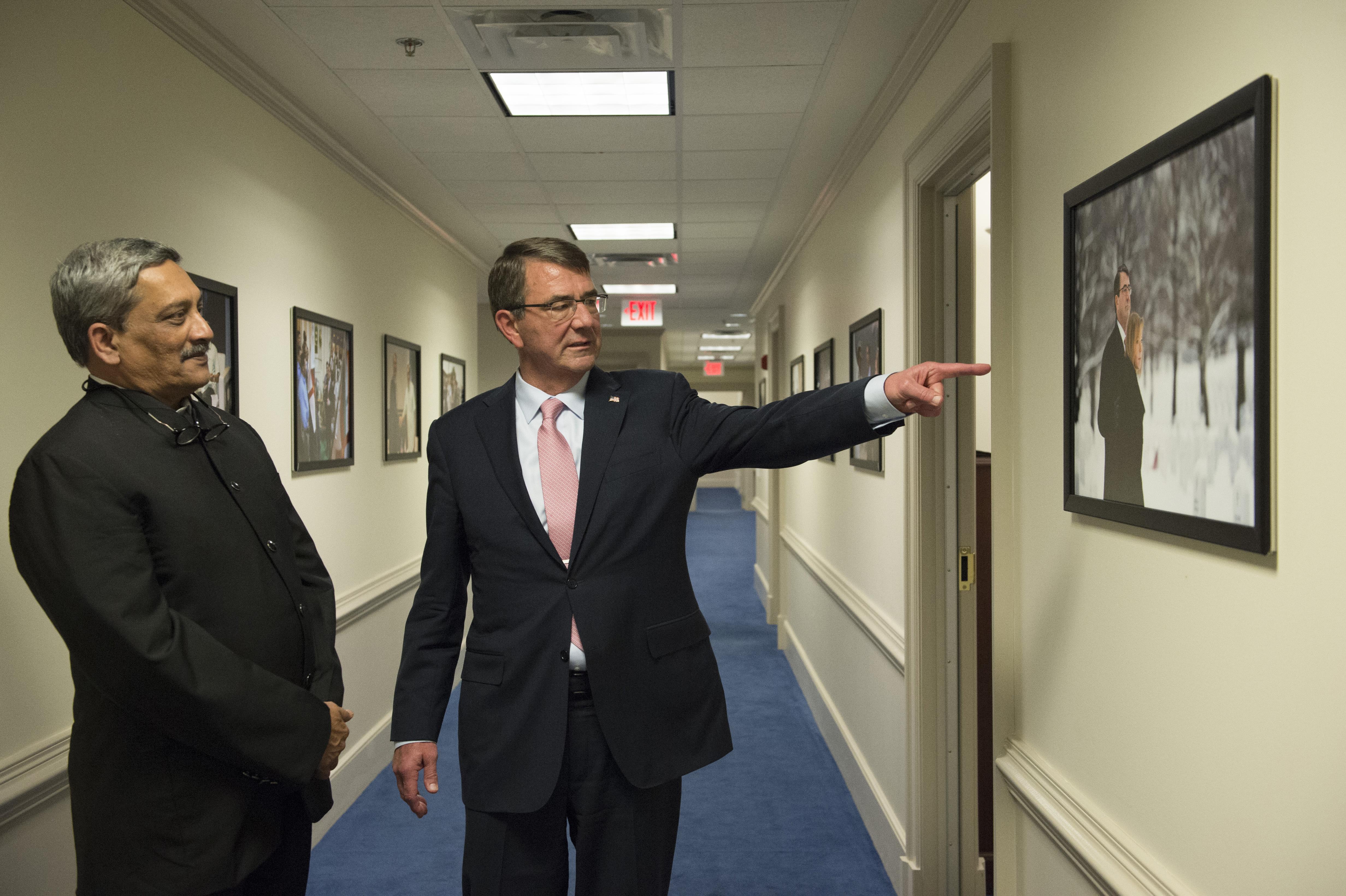
The new joint cooperation — viewed in the aggregate — points to current defense realities for both India and the U.S. in the Pacific and Indian Ocean.
The U.S. “Pivot to the Pacific” dovetails with India’s “Act East” policy — a move from the government of Prime Minister Narendra Modi to engage more with countries in the Western Pacific.
While neither Carter nor Parrikar mentioned any country by name, China’s expanding military power — particularly the People’s Liberation Army Navy — is a consistent specter in the background of U.S. and Indian defense cooperation.
China is easily on the top of the list of potential military adversaries for both.
“The reason for India to suddenly become more aggressive emerges from the history of an ugly spat. With a vexed border issue spiraling out of control and increasing claims over Arunachal Pradesh as its landmass, China lately has been making things difficult for India to remain at peace,” wrote USNI News contributor Punit Saurabh in a June opinion piece.
“China has purposely transgressed and makes a claim over vast areas of Indian territory that it considers its own, having captured it during a brief war in 1961.”
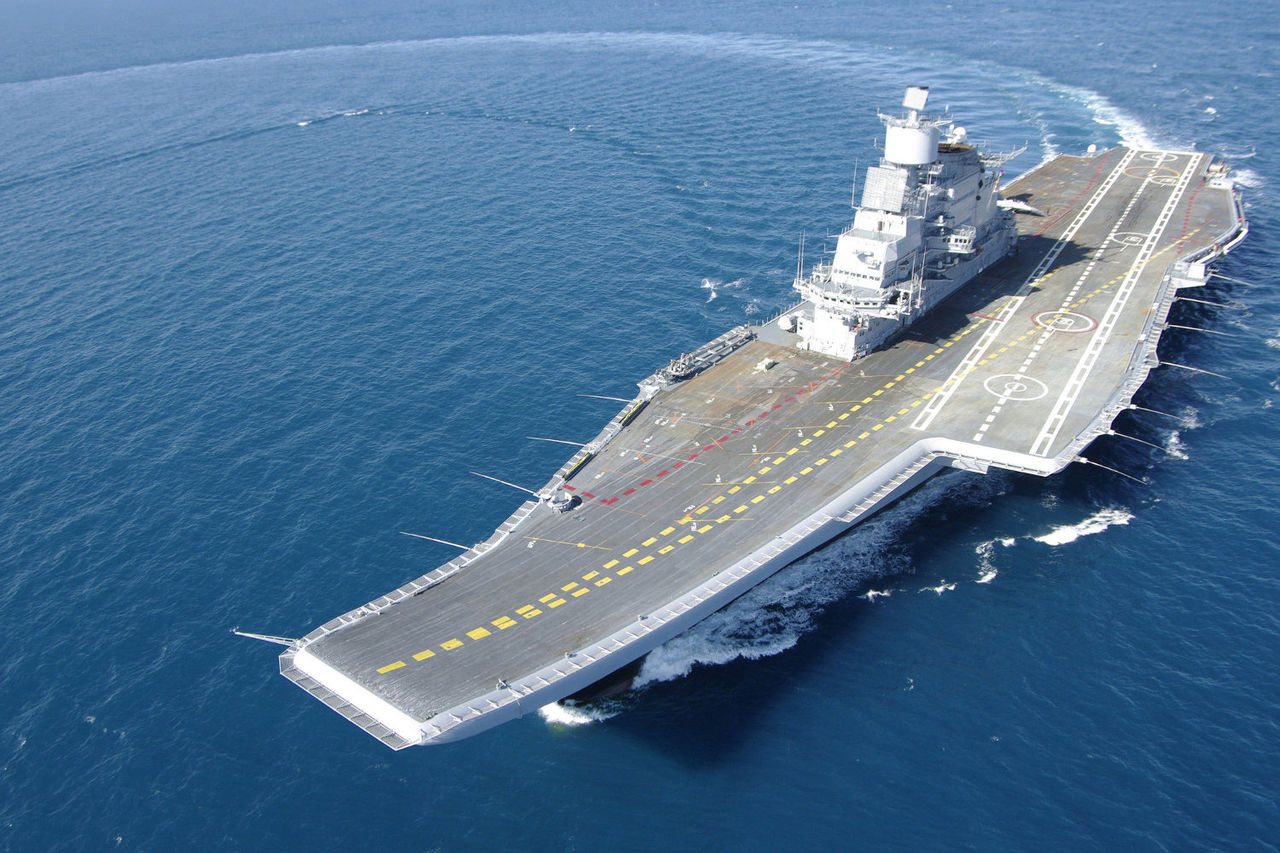
India has also expressed concern in China’s uptick in naval operations in the Indian Ocean and defense cooperation with regional rival Pakistan in realm of submarines and the joint Pakistan Aeronautical Complex (PAC) and the Chengdu Aircraft Corporation (CAC) developed JF-17 Thunder fighter.
India’s defense material cooperation with the U.S. also has implications for New Delhi’s relationship with Russia. The Indian Armed Forces are equipped with mostly Russian kit, but several recent high-profile delays in delivery of orders — including the Russian-built refurbished carrier INS Vikramaditya — could be an opportunity for the U.S. to expand defense sales in India.
“If India keeps relying on Russia on their primary partner they’re going to lose in the technology race,” Eric Wertheim, author of U.S. Naval Institute’s Combat Fleets of the World, told USNI News earlier this year.
Carrier Cooperation
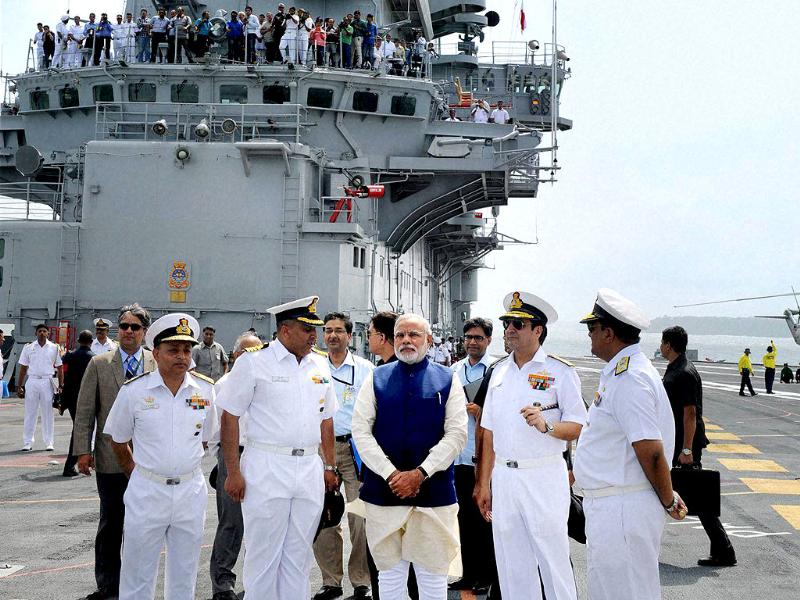
The highest end of military cooperation between India and the U.S. is on the India’s second domestically built aircraft carrier — INS Vishal.
The proposed 65,000-ton carrier — part of India’s indigenous aircraft carrier-II (IAC-II) program — will be among the most complex shipbuilding tasks the Indian industrial base has faced.
India’s first domestic carrier — INS Vikrant (IAC-I) — is based on simpler-to-build Russian short-take off but arrested recovery (STOBAR) (a so-called ski-jump configuration) that limits the types and size of aircraft that can be launched from the carrier. The program has struggled with cost overruns and several delays.
Military officials have said the second carrier Vishal should include the more complicated catapult-assisted take-off but arrested recovery (CATOBAR) that would allow a greater variety of aircraft and payloads, according to letters of request (LoR) for help on the carrier design sent to U.K. firm BAE Systems, DCNS in France, Lockheed Martin and Russia’s Rosoboronexport, reported Jane’s Navy International in July.
“According to the LoR, the IAC-2 is envisaged as a 300 m-long flattop vessel with a catapult- assisted take-off but arrested recovery (CATOBAR) capability that can embark around 35 fighters and 20 helicopters,” read the Jane’s report.
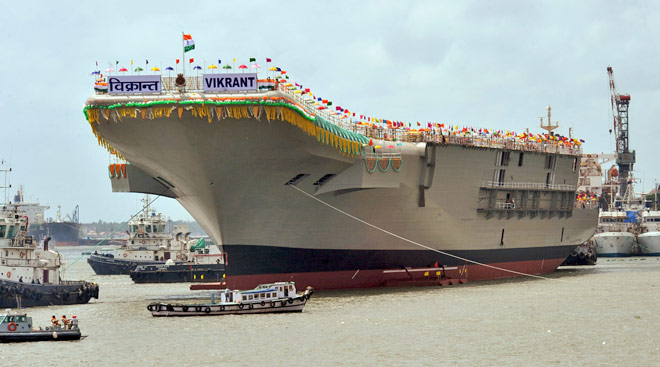
“The LoR also includes the option of the IAC-2 being fitted with General Atomics’ Electro Magnetic Aircraft Launched System (EMALS) that will equip the U.S. Navy’s (USN’s) Gerald Ford-class carrier, which is due to be commissioned in 2016.”
For its part, the U.S. has formed a carrier working group to study next steps in bilateral cooperation.
The group — which last met in August — has agreed to draft an information exchange agreement that would include U.S. thought in carrier design and the Indian Navy has sent a formal request for information (RoI) for an aircraft design consultancy, USNI News has learned. The group is scheduled to meet again in India in February.





